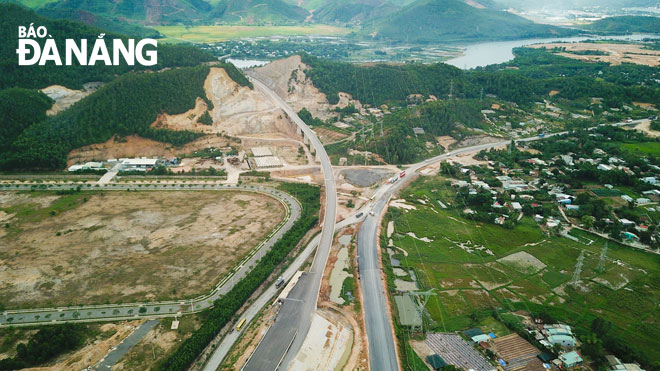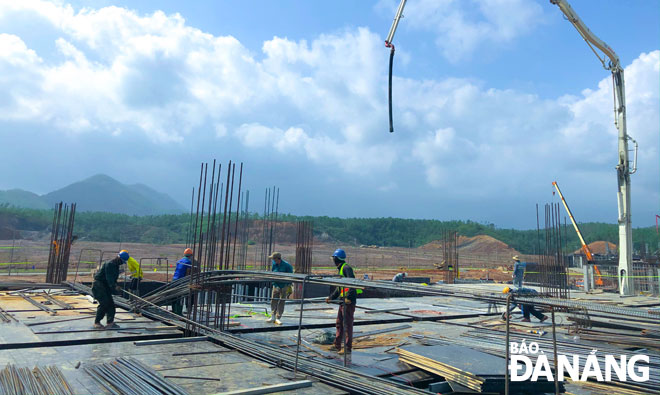Industrial Property Investment in Da Nang promised to thrive this year
2021 is witnessing the rebounding of Da Nang economy and its domestic and foreign investment attraction scene. The demand for industrial properties, especially land and ready-built factories, has been increasing sharply over recent times.
 |
| New industrial parks and clusters are expected to be developed in the western part of Da Nang |
Taking advantage of this positive signal, Da Nang is gearing up preparation for investment attraction in industrial production infrastructure.
According to the Viet Nam Real Estate Brokers’ Association, at present, Viet Nam houses 260 industrial parks (IPs) in operation, and 75 others under construction.
The average annual occupancy rate in the IPs is over 70%. The average factory rental price across Viet Nam was VND60-80,000 per sq.m, and the purchase price of land in industrial parks with infrastructure ranged from VND3 to 5 million per m2.
A report from the association also showed the number of proposals to research investment in new construction of industrial parks in 2020 also increased sharply compared to previous years.
It is also predicted that, in 2021, many new IPs will participate in Viet Nam’s industrial property market. Industrial parks and clusters in Viet Nam will become more attractive to foreign investors who want to shift their production from other foreign countries to Viet Nam, hence increasing the demand for industrial properties around the country, including Da Nang.
According to companies specialising in conducting research into domestic and international real estate markets, Da Nang has great potential for the development of the industrial sector, especially the industrial real estate segment.
In particular, Vietnamese government has already asked the Ministry of Planning and Investment to adjust the planning for IPs in Da Nang. Following recent approval from Prime Minister Nguyen Xuan Phuc, the Supporting Industrial Park project serving the Da Nang Hi-tech Park has been added to a master plan for developing IPs in Da Nang. This has created an important premise for the city to drive the development of supporting industries, and promote investment attraction.
Accordingly, Da Nang is allowed to use its medium-term investment capital for the 2016-2020 period on implementing the 58.531ha Supporting Industrial Park project serving the Da Nang Hi-tech Park.
 |
| Many investors are actively seeking investment opportunities in Da Nang industrial properties. Workers are pictured constructing infrastructure in the concentrated Da Nang IT Park. |
As planed, Da Nang will attach importance to developing the 2nd stage of the Hoa Cam Industrial Park (IP) covering 120ha at a cost of about 2,232 billion VND, the 400ha, over 6,083 billion VND Hoa Ninh IP and the 5,657 billion VND, 360ha Hoa Nhon IP over the 2020 – 2025 period.
Besides, in parallel with developing new IPs, the Da Nang People's Committee has approved a project for developing industrial clusters (ICs) in Da Nang by 2030. Under specific objectives, in the 2021 – 2025 period, the city plans to develop up to five new ICs to meet land demand of super small, small and medium-sized enterprises, industrial production and handicraft making facilities.
In particular, work is expected to start on the infrastructure construction of the Non Nuoc stone carving village IC and the Hoa Son split stone village IC in a bid to properly manage environmental issues and enhance production efficiency.
Mr Truong Dinh Duc, Head of the Da Nang chapter of the Office of Central Viet Nam Private Entrepreneurs’ Association affirmed the fact that the city's keen interest in investing in industrial infrastructure development and fostering industrial property projects has helped leverage the entire city’s growth.
The aforementioned project for developing ICs in Da Nang by 2030, along with the municipal administration’s approval for priority aspects heading towards green and sustainable growth, is expected to drive the growth of the industry sector and the socio-economic performance in the time ahead.
By TRIEU TUNG- Translated by A.T